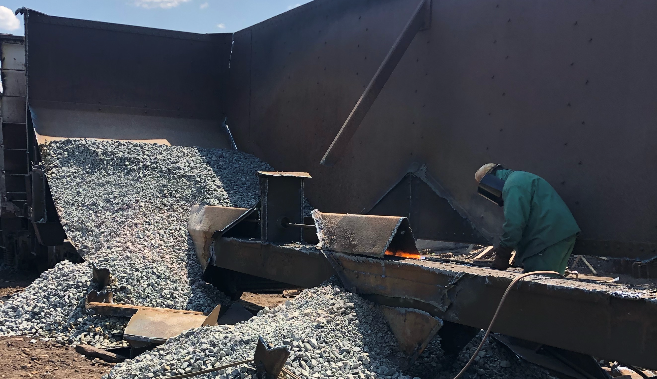There’s an interesting phenomenon occurring in the railcar market. There’s a bunch of railcars in storage. Most of those railcars are tank cars, covered hoppers for frac sand and coal cars (gondolas and hoppers) that will likely never find a home in the productive transportation world. There is also a subset of railcars that are still productive in niche markets but need a little marketing TLC to get placed. Along with this group are the subsets of productive cars in the covered hopper arena, flatcar and boxcar arena and mill gondola and 4000 cube converted coal to scrap gondola.
The obvious candidate railcars to scrap, for example out of compliance tank cars that cost more to convert than to replace, old grain cars that are in the 4427/4650 cube range and are reaching their end-of-life status, coal cars that don’t fit alternative use category or conversion category to other car types are somewhat obvious from the outside looking in.
The dilemma is what do you do with the 4750 cubic foot covered hopper that’s hauling corn to the domestic feed and export market, or the 2244 cube mill gondola that’s rated at 263,000 hauling scrap to a U.S. steel mill which requires a steady stream of scrap material or the 70-ton box car in general service transporting a consumer product? These railcar types aren’t ideal and are often seen as dinosaurs in a high capacity 286,000 gross weight, high cube capacity railcar transportation world. The easiest decision is to scrap them while the scrap pricing is nearing double or sometimes close to triple of what it’s been in the last few years. A price that was $4,000 to $6,000 a few years ago is now $10,000 to $12,000 per railcar. Makes scrapping them seem a whole lot easier! It is except when you consider replacement costs.
New railcars are expensive and rightfully so as input costs (labor and materials) have skyrocketed along with everything else in the marketplace. A consideration would be to consider what a new railcar replacement would cost and if your company intends on leasing the railcar(s) or buying them. Do you make the buy decision and come up with enough cash to cover new railcar costs in the high tens of thousands of dollars to low hundred thousand dollars or do you bank or self-finance the railcars? Do you consider operating leases for the railcars? How long does it take to get the cars in service? Order books are out to 2022 for most railcar builders regardless of the railcar type.
A method of analyzing this is to calculate the difference between what the value a new railcar would bring to your situation (or not bring to your situation). The gain side may include a higher cubic capacity railcar, higher gross weight on rail railcar and possibly less maintenance for the next five or ten years. The negative side would be an expected higher lease rate that may not make up for the increased capacity, higher per railcar freight rates that may or may not be lower on a per ton basis, having to wait for railcars to be delivered and loss of shipment capacity by scrapping railcars before replacements can be obtained. Depending on how the railcars are financed you could carry more debt on the balance sheet or have a higher operating cost for movement of your product. Conversely you could also take full advantage of a higher per railcar capacity while enjoying the movement of an additional seven to ten tons of product every trip.
There’s a capacity gap if you scrap your operational railcars today and when new railcars will be available. Something that must be completed before scrap prices fall subjecting you to lower prices for your used equipment while being locked into higher new railcar costs. Be sure you don’t find yourself short of railcars during that time frame. In the meantime, while you’re waiting for new cars, will the scrap pricing prevail such that the original thought process still applies?
It’s always a challenge to see into the future and decide on a course of action. Our recommendation is to do your analysis and define several “what-if” scenarios. The numbers should guide you.

